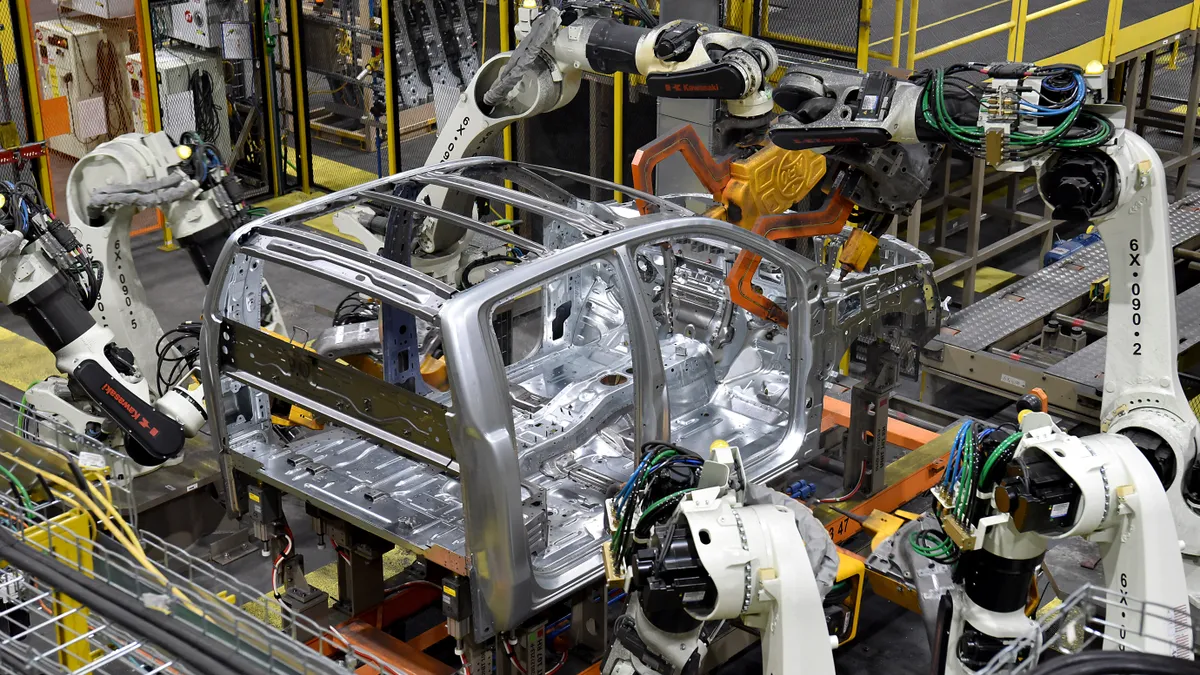Dive Brief:
- Industrial robot sales in North America plummeted 30% in 2023 after two years of record ordering activity, according to the Association for Advancing Automation (A3).
- Companies purchased 31,159 robots last year, down from 44,196 in 2022 and 39,708 in 2021, A3 said in a news release last week. Sales to automotive manufacturers declined the most at 34%, while all other industries saw a 25% total decrease.
- “While robot sales naturally ebb and flow, the return to more typical robot sales after the last two record years can likely be attributed to a few obvious issues: a slow U.S. economy, higher interest rates and even the over purchasing of robots in 2022 from supply chain concerns,” A3 President Jeff Burnstein said in a statement.
Robot sales plunge after pandemic surge
Dive Insight:
Industrial robot sales grew at a frenzied pace during the pandemic as employers looked to meet heightened demand in a difficult hiring environment. But companies have since drawn back their purchases as they grapple with an uncertain economy and limited investment capital.
A slower pace of distribution center openings also likely contributed to the reduced demand for robots, Burnstein said.
Robot ordering activity hasn't dried up completely, however. The Feed, a sports nutrition retailer, announced in January it is installing 48 Brightpick Autopickers in a Colorado warehouse for order fulfillment. And alcohol distributor Southern Glazer's Wine and Spirits said in November it will deploy Symbotic's end-to-end automation system with robotic case-picking capabilities in select distribution centers.
Burnstein said there is optimism that overall ordering activity could pick up again soon. Q4 sales jumped 20% quarter over quarter, with more orders reported in industries including automotive, plastics and rubbers, metals and semiconductor and electronics/photonics.
“While robotic sales were down over the year, 2023 ended with both an increase over the previous quarter and a nearly equal number of sales from automotive and non-automotive companies,” Burnstein said. “Both are promising signs that more industries are becoming increasingly comfortable with automation overall."
This story was first published in our Operations Weekly newsletter. Sign up here.














